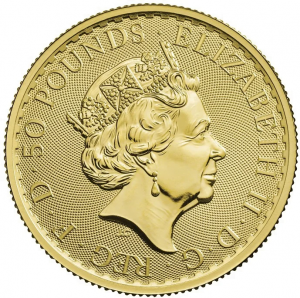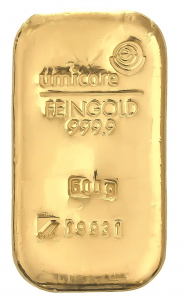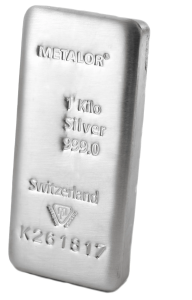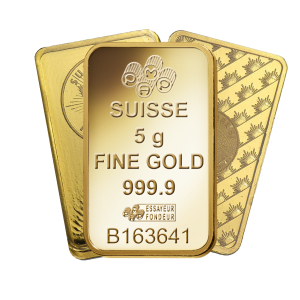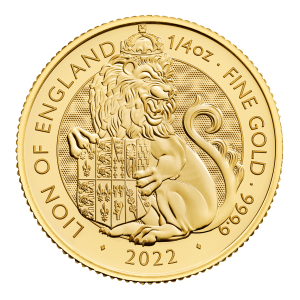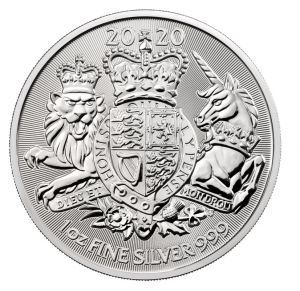Where to buy gold bullion
Everyone wants to possess their own piece of gold bullion. Certainly, physical gold beats paper gold in anyone’s mind. However, unless you’re an expert, it’s not always obvious where to buy gold bullion. You want to feel comfortable that the gold is genuine, in good condition and at a great price. So, if you’re looking to buy gold bullion in London there are several options. Investors can buy gold London-wide, here we provide some insights as to the best places to shop.
West End jewellery shops
You can’t beat the feeling of browsing and unearthing hidden treasures. London is fortunate to possess many obscure boutiques and jewellery shops selling all sorts of collectables. There is every chance that you may unearth the odd modest-sized pieces of gold bullion.
Also, watch our YouTube video – “How much is a gold bar worth?”
However, you are far more likely to find collectable and historical gold coins in these places. The problem is that you may well end up paying far more than the bullion price as the gold is deemed to hold a degree of numismatic value. After all, do you know the value of a Victorian gold Sovereign? – See our guide to buying gold Sovereigns here and also view our main gold sovereigns page here
Before you buy gold bullion, make sure you read our FREE Ultimate Insider’s Guide to Gold Investment
Hatton Garden
One of the most famous jewellery quarters in Europe is the area known as Hatton Garden, not far from Farringdon tube station, it is a must-go place to visit when you buy gold in London. This is one long road of continuous jewellers, meaning that they have to be relatively competitive to gain your business. Their focus will be more on selling jewellery so any second-hand bullion bars they receive may well be melted down before you get the chance to buy them.
Ask what they have as it’s unlikely that such small gold bullion bars will be on display. There is also a chance that you may be able to unearth the odd gold bullion coin at reasonable prices, but they may be in poor condition. Undoubtedly though, Hatton Garden has to be one of the best places where to buy gold in London.
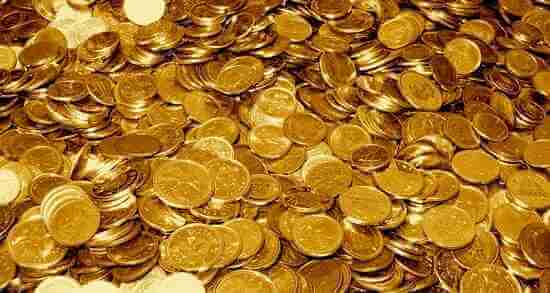
Finding gold bullion from a reliable dealer in London can often involve quite a hunt
Buy Gold London – Other Areas to Consider
Within the Central London area, many retail outlets deal in gold jewellery and bullion. However, do bear in mind that much of this is likely to be jewellery and coins. There is one shop now though, where you can buy gold bars.
There are several shops around Old Bond Street, New Bond Street, Piccadilly Circus Station and Oxford Street. Oxford Street caters to the international tourists who flock to London each year and has nearly 20 shops on it. These range from mid-priced to extremely pricey. For example, the Selfridges building itself boasts of big names like Cartier, Van Cleef and Tiffany. That’s the high end.
Another area worthy of mention is Sloane Street near Knightsbridge, where several gold dealers London premises are. This is a stone’s throw from Harrods, which is right next to the Knightsbridge tube station subway. Of course, Harrods is expensive, but there are many concession stores within the premises of Harrods. The concession model involves a brand using a designated space within a large departmental store, where deals are offered to customers. By association with Harrods, these gold retailers boost their brand image significantly. One such example is the Graff Diamonds Concession.
and in the city…
Another area worth scouting is the area around the Bank of England. This is a well-spread area with Threadneedle Street and the Cornhill Road on one side and Princes Street and Queen Victoria Street on the other side. Near the Bank subway station, opposite the Bank of England lies the Royal Exchange – a shopping mall with several gold dealers in it. There are other large bullion dealers in the area as well on the Cornhill Road, as you go towards the Aldgate train station.
Gold dealers
There are many specialist gold dealers located in and around London. These guys should be able to offer you a variety of bullion options, from bullion gold coins or gold bars in a variety of sizes. Always buy from members of the British Numismatic Trade Association (BNTA) or British Numismatic Society as you’ll be able to trust the authenticity of their gold. However, before you decide to hunt down your nearest gold dealer and turn up with cash to buy your gold bullion, there are security issues to consider.
Criminals target people emerging from such premises as they know there’s a good chance that you’ll be holding some gold. As well as the threat of being mugged, it’s unlikely your gold will be insured – leaving you nursing a possible financial loss. Most gold dealers will not accept passing trade for this very reason and tend to despatch from alternative, discrete premises. You would also need to bring identification if you wished to purchase and walk away with more than £5k of gold. However, many of these suppliers will safely and securely post the gold bullion direct to your door or offer an insured storage option, this is particularly the case for bulk purposes.
When choosing where to buy gold bullion, choosing gold dealers assures you of authenticity, purity, price and security.
Our London despatch centre address:
- Physical Gold Limited, 63/66 Hatton Garden, London EC1N 8LE – All purchases have to be completed online as we don’t sell over the counter. Pick up of orders is possible from our despatch centre by appointment.
Call our investment advisors to find out more about reliable dealers in London
We hope you have enjoyed our guide to where to buy gold in London. Our team of experts can be reached if you need to find out more about the safest and most reliable way to buy gold as well as silver and take delivery physically. Physical Gold experts have been in the gold business selling products such as gold Britannia coins for years and can advise and guide you to avoid common pitfalls. Call us today on 020 7060 9992 or get in touch via our website. We’re always happy to help.
Image Credit: tao_zhyn
Gold’s unique physical properties
The everlasting symbol of luck, prosperity and wealth, choosing to invest in gold – especially rare gold – has always shown to be a shrewd move thanks to its easy liquidity and high value. As one of the most sought-after precious metals in the world, demand has long outstripped supply, meaning it’s always been hot property. But what actually makes up gold itself? What are the physical properties which help keep gold so investable and ensure it’s used in many different ways?
It’s a soft, ductile metal
Gold is extremely ductile and malleable which makes it highly versatile. It’s a heavy metal with a density of 19.3 g cm-3. In fact, just one single gram of gold can be flattened out into a thin sheet of gold which covers an area of one metre – that’s around just 230 atoms thick. It is actually so soft that even a small item such as a coin is enough to scratch a pure piece of gold.
Gold has a very high boiling and melting point
The temperature you need to melt gold is 1,948 degrees Fahrenheit, which is an incredible 1,065 centigrade. In order to strengthen the gold for practical uses, other alloy metals such as zinc, silver and copper are added whilst the gold is being melted. Gold boils at 5,173 degrees Fahrenheit (2,856 Centigrade).
Dowload our FREE Insiders Guide to Tax-Free Gold Investment here
It’s a good conductor of electricity and heat
Gold is an excellent conductor of electricity although it is too expensive to use in cabling, hence the use of copper instead. Exposure to air, moisture, heat and other corrosive agents have an extremely minimal effect on gold, which is why it’s so suited for manufacturing jewellery and coins.
Gold will not tarnish
Unlike silver which can degrade in the air over time, gold will not rust or taint. Gold, in particular, is extremely difficult to corrode. Only very strong acids such as nitric acid and hydrochloric acid can cause gold to become damaged. This is why wedding bands are traditionally made of gold, as they are guaranteed to stand the test of time.
Gold is a noble metal
Gold is a noble metal. Noble metals are a group of metals that do not corrode over time under normal conditions.
Gold is highly reflective
Gold does not absorb light or heat,
meaning it’s supremely reflective. No rays of light are absorbed at all, they are simply reflected.
Gold is very heavy and dense
Gold is also extremely heavy, with a density of 19.4 g cm-3. By way of comparison, lead is only 11.4 g cm-3 in density. This heaviness plays a vital part in many of the physical methods required to mind gold from its many sources.
Carats for purity
Most natural gold is actually impure. It generally contains small but notable traces of other metals including silver, copper, silver, mercury and palladium. It’s actually these other elements that give gold its distinctive colours. For instance, gold that has a large amount of copper will have a red hue to it, whilst gold that contains a lot of less expensive silver will be much paler are far less bright yellow than you would expect from pure gold. The purity of gold is measured in carats with 100% pure gold being 24 carats. 18-carat gold is then 18/24, (75%) pure, and 14-carat gold has 58% purity. Carat values are often used to describe gold bars only come in the following integers: 24, 22, 18, 14 and 9.
Invest with Physical Gold today
Here at Physical Gold we are experts in our field and can help with any aspect of gold investment. This includes gold sovereign coins, gold Britannia coins and bars in weights such as 1oz, 100g and a mighty 1KG. Speak to us on 020 7060 9992 or drop us an email to discover more about our investment opportunities or get advice on trading gold now.
Image Credits: Pixabay and MasterTux
What is gold used for?
Gold is one of the most sought-after and widely used commodities on the planet. The fact that it does not tarnish and is so easily shaped makes it perfect for use in all kinds of applications. It also has many other beneficial properties such as its attractive natural sparkle, and the fact that it’s a great natural conductor of electricity, highlighting the importance of gold across a range of aspects. Here are 15 different uses for gold in the modern world.
1) Jewellery
When most people picture gold, they envision a sparkling necklace or diamond embedded engagement ring. In fact, most of the world’s gold consumption is used in the production of jewellery. Figures estimate that around 52% of the world’s total production of gold is used exclusively by the jewellery industry with countries such as India and China continuing to fuel this massive demand.
Why do we use gold for jewellery?
Gold has been used to create jewellery for thousands of years. You could argue that gold is the perfect metal for jewellery for a number of reasons. One of the main reasons for its everlasting popularity is the fact that it does not react with moisture and so, therefore, does not rust and is tarnish resistant. Visually, it has incredible lustre and its yellow colour is appealing for ornamental jewellery. It’s high ability to alloy with other metals opens up huge opportunity to create a vast array of alternative colours to suit jewellery. Colours will vary according to which metals gold is combined with. Silver produces a white gold, while copper creates a reddish tinge.
Gold’s versatility lends itself to elaborate designs
Gold’s malleability provides the ability to be hammered into very thin sheets, drawn into wires and be melted and cast into ornate shapes, all of which helps creativity in jewellery. As it mixes so well with other metals, the carat (or purity) or the gold is often diluted to decrease this malleability and softness. This suits specialist jewellery production which needs to be strong enough to hold stones. Demand for bespoke jewellery has increased considerably in recent years as more consumers wish to possess individual jewellery items no one else owns. Gold’s various carat mixes make it the most versatile metal to achieve this uniqueness.
Tradition’s effect on gold’s jewellery role
Undoubtedly, the long history of gold being highly valued and representing success and power, has contributed to it being the preferred choice for jewellery. Along with tradition, gold’s ubiquity in various religions has led to vast populations expecting important objects and jewellery to be made of gold.
2) Money/finance
After jewellery, the most common use for gold is in coinage. Due to its rarity gold has long been used as a form of currency and people were using gold coins as far back as 6000 years ago. At one stage many of the world’s currencies were fixed to a gold standard which was set at the price per ounce. Whilst we don’t use gold to make money anymore, it is still used to make bullion coins (e.g. Gold Sovereigns and Gold Britannias), and it is estimated that around 10% of the world’s gold is used in coinage or in financial stores of government.
Why was gold used as currency?
Gold’s relative scarcity suited the concept of currency ideally, with its rarity and desirability providing a sound basis for value and long term exchange. Originally, gold pieces were used as forms of exchange for goods, but overtime size of these pieces became standardised into coins to enable smoother transactions. Even when the first paper money was introduced, gold was kept as collateral to guarantee its value.
Click here to discover the 7 vital factors you need to know before buying gold or silver
3) Investment
Gold has been a popular commodity for centuries and is viewed by investors as a safe haven and an excellent store of wealth. Due to the fact that it is a tangible commodity with a long history of market performance, gold is often purchased by investors seeking to protect themselves against the risks of inflation and downturns in the economy. The most common form of gold investment is usually gold bullion bars or coins. You can also purchase gold exchange funds on the stock exchange.
Gold going digital
Gold has been digitised in various forms to open gold investment to those wishing to actively trade. Whether it takes the form of Exchange Traded Funds (ETFs), spread betting on the gold price or Gold equity funds, the precious metal plays a growing role in investors’ portfolios.

100g Gold Bars
4) Collateral for a loan
In some countries, like India for example, gold is considered very precious and can be used as collateral against loans. As we move towards a more digitised financial system, tangible assets such as gold or silver are likely to become more important and using gold as collateral could become more commonplace.
5) Dentistry
Gold has played an important role in the dental industry for nearly 3000 years, 
The use of gold in dentistry began to decline in the late 1970s due to the rising gold price. Alternatives were developed, but we’ve recently observed a renaissance in gold usage due to worries that lees inert materials may impact long-term health.
6) Medicine
The unique properties and uses of gold has meant it’s been used to treat a variety of medical conditions since around 2500 BC. Chinese physicians originally used pure gold to treat conditions such as smallpox and skin ulcers. The ancient Romans also used gold salves to treat a variety of skin problems. Today gold is still used in medicinal treatments, particularly the treatment of inflammatory conditions such as arthritis, where injections of a gold solution are sometimes administered in particularly severe cases. Since gold is very resistant to bacteria and non-toxic, it is also frequently used in bodily implants where there may be a risk of infection, such as inner ear implants.
Use of gold nanoparticles for cancer treatment
Colloidal gold nanoparticles are increasingly being used to help the delivery of chemotherapy. Their minute size and non-immunogenicity make their molecules ideal for targeted drug delivery systems. Drug molecules and tumor-specific ligands can be attached to the gold nanoparticles to pursue the tumour without redeploying through the body.
How to sell gold for the most cash – don’t sell gold without watching our video
7) Mobile phones
Not many people know this, but gold can be found in the electronics of every single mobile device in the world. Research carried out by the World Gold Council, discovered that a single phone can contain up to 50 milligrams of gold. This may not seem like a lot but when you consider the number of mobile phone’s there are in the world, it all adds up to a pretty impressive amount of gold.
Why is gold used when silver is cheaper and more conductive?
It’s all to do with the types of electronic devices and gold’s high resistance to rust and corrosion. This is particularly important with solid state electronics which use very low currents and voltage. Examples of these are light-emitting diodes (LED) and liquid crystal displays (LCD) which are based solely on semi-conductors. Obviously, this technology predominates in today’s smartphone screens. With such low voltages, the slightest corrosion at the contact points will disrupt the flow of current, so gold is utilised for its reliability. That’s why gold is a feature of high-end speaker cable connectors.
Here’s the interesting part for gold supply
With gold’s use in every mobile device, the amount of gold in the world is actually shrinking each day! Each contains about 30p of gold, not a lot right? However, with around a billion mobile phones in global circulation and each one with an average of 2 years lifespan, it soon adds up. With very few phones being recycled, this gold is lost forever.

Every one of the billion mobile phones contains gold
8) Computers/laptops
Gold is also frequently used in other electronic devices such as laptops and computers. It is one of the best natural conductors of electricity which is why it is often found in computer chips, allowing your computer to pass on, and receive information more easily.
Why do we use gold?
Whilst not as conductive a metal as silver, gold is more frequently used in electronics due to the fact it doesn’t ever tarnish or rust. With the need for so much data transmitting, the demand for reliability outweighs the high cost of using gold. Generally, gold is utilised to mount processing chips onto motherboards.
9) In space
Gold plays a key role in protecting astronauts from harmful infrared rays from the sun. The visor on their helmet is coated with a thin layer of gold which acts as a filter. Gold is also used on space vehicles to help reflect infrared radiation and stabilize core temperatures. With such vast sums being invested into space research, reliability is key, so the high cost of gold isn’t a deterrent to its usage.
10) Food/drink
Some particularly up-market restaurants use gold shavings or gold leaf to decorate their more extravagant dishes. Gold is non-toxic and can be eaten without consequence, however, it can’t be digested and passes straight through the body. Gold also has no taste so the use of gold in food is purely for decorative purposes.

Japanese gold leaf producers Haku Ichi, serve ice cream decorated in gold.
11) Manufacturing
Gold is frequently used in manufacturing due to its ability to conduct heat and reflect light. It can also be used as a lubricant in any number of engineering applications due to its resistance to cold welding.
12) Buildings
Some particularly grand buildings often feature some form of gold decoration. Gold leaf, in particular, is frequently used to adorn important features on buildings all over the world. Some of the most famous examples include St. Michael’s Cathedral in Kiev, whose golden domes can be seen from miles around, and the Criterion Restaurant in London with its extravagant gold leaf ceiling.
Why is gold leaf used so widely?
Apart from gold’s obvious status symbol and incredible aesthetics, its malleability is the key to it adorning so many prestigious buildings. Gold leaf is created when gold sheets are beaten to an incredibly thin 3 millionths of an inch in thickness. This amazing feat means the gold leaf is very versatile to gild and emboss non-uniform surfaces. It also reduces the cost of material dramatically, allowing larger areas to be gilded. The largest cost is, in fact, the skilled labour required to apply the specialist leaf.
Gold’s anti-corrosive and anti-bacterial qualities also make it a popular choice to use on certain internal and external building surfaces which need to be protected. Gold’s easy marriage with other metals creates the opportunity to gild buildings with a wide variety of gold leaf colours and shades. Despite this versatility, the recognisable yellow of high carat gold is usually selected due to its conspicuous nature.
Less obvious is the use of gold in glass production. It is utilised to create a red hue to the glass and is pivotal for climate control in speciality glass. Whether added to the glass compound or coated onto its surface, the addition of gold helps reflect the sun’s glare and heat while also acting as insulation in the winter.

Palaces and religious buildings use gold leaf to decorate domes
13) Cosmetics/beauty
Gold is frequently used in the cosmetics industry and has been hailed as a revolutionary ingredient in everything from topical skincare creams to lip balms and moisturisers. Its many properties are said to help improve skin tone and elasticity as well as providing significant anti-ageing benefits and improving blood circulation. Gold Nano-particles have been used in the products of some pretty influential names in the beauty industry including L’Oréal and Dior.
14) Printing
Gold ink is becoming increasingly popular with printing companies since photos printed in gold can produce high quality and long-lasting images. CD’s and DVD’s that have been coated in printed gold can also resist scratches and last longer.
More recently, there’s a growing trend to use gold in 3D printing. The reduction in the cost of 3D printers and becoming more widespread has led to a number of materials being experimented with. Essentially using a cast system, gold is increasingly being chosen due produce unique and desirable one-off objects.
15) Displaying wealth & status
For some people, gold is a sign of power and status. Wealthy individuals have always been keen to show off their wealth in the form of gold, whether it’s by wearing a luxury wristwatch or a piece of fancy jewellery. Today gold is used to decorate iPhones, cars and was even used to create an exclusive credit card created by a bank in Kazakhstan. The card was made using gold, diamonds and mother of pearl.
Gold’s high esteem is also reflected in sport. Gold medals and trophies are synonymous with winners. King’s and queens still adorn crowns made of gold, rather than stronger metals, simply because of their global status.
Future uses of gold
More and more uses for gold are being discovered all the time. Our growing dependence on electronics and computers also means that gold usage is likely to grow sooner rather than later.
Harnessing the power of gold nanoparticles is also creating an ever-growing list of applications for gold. Nanoparticles are already being used in botanical research, cancer, toxin and pathogen detection and optical-electronics for sensory exploratory probes.
Physical Gold is one of the leading providers of gold and silver in the UK. Our professional team of experts help guide investors who are interested in tax-efficient solutions, to help diversify their investment portfolio. For more information, please give us a call on 020 7060 9992.

